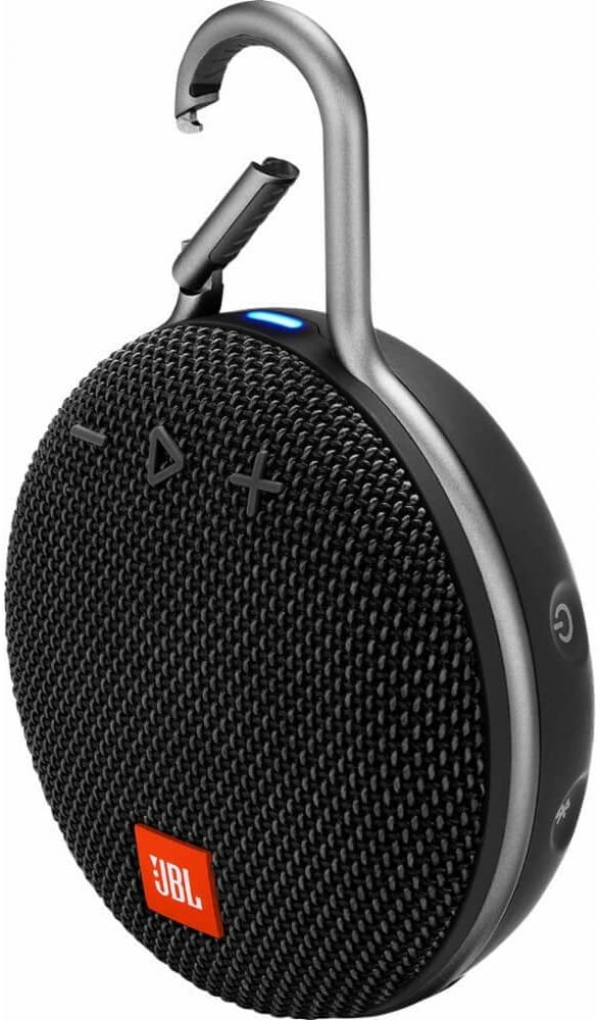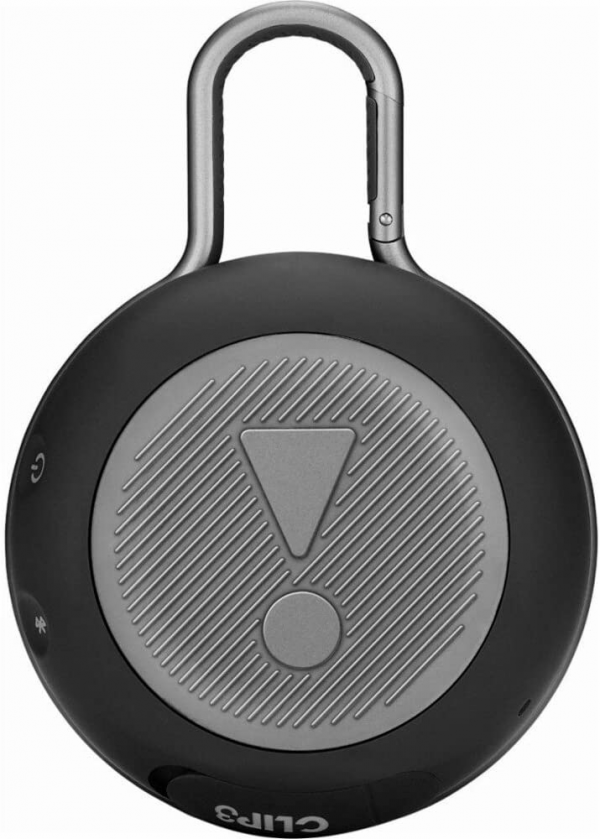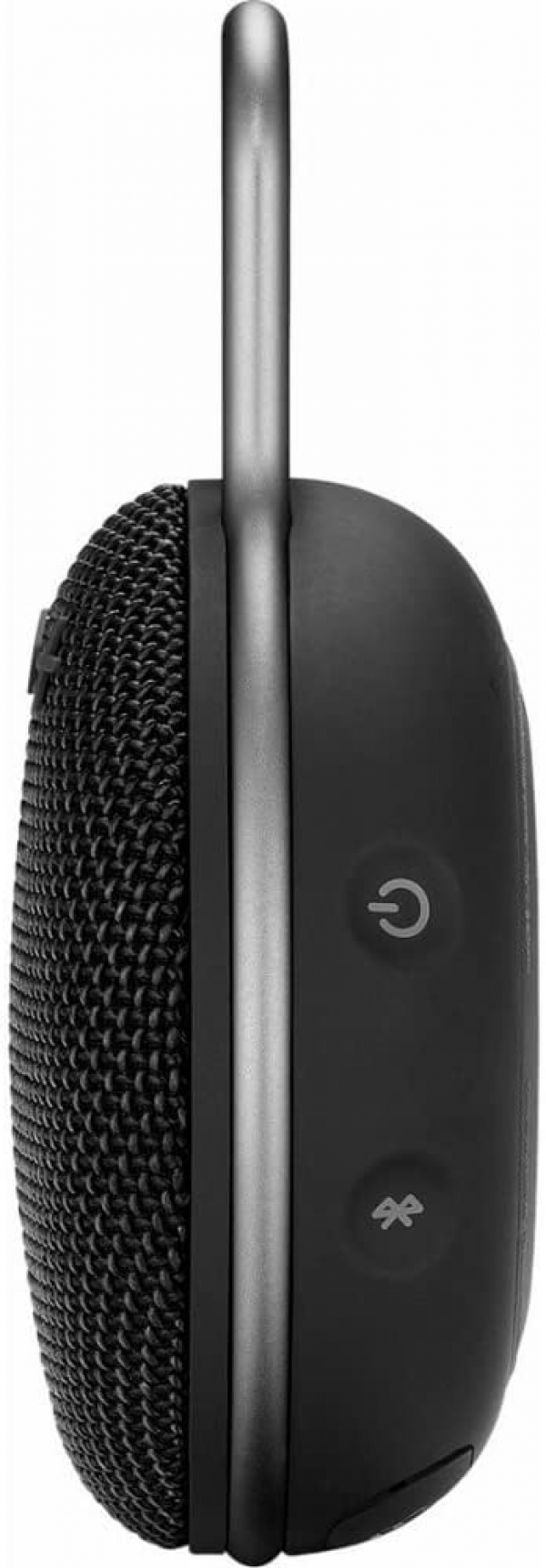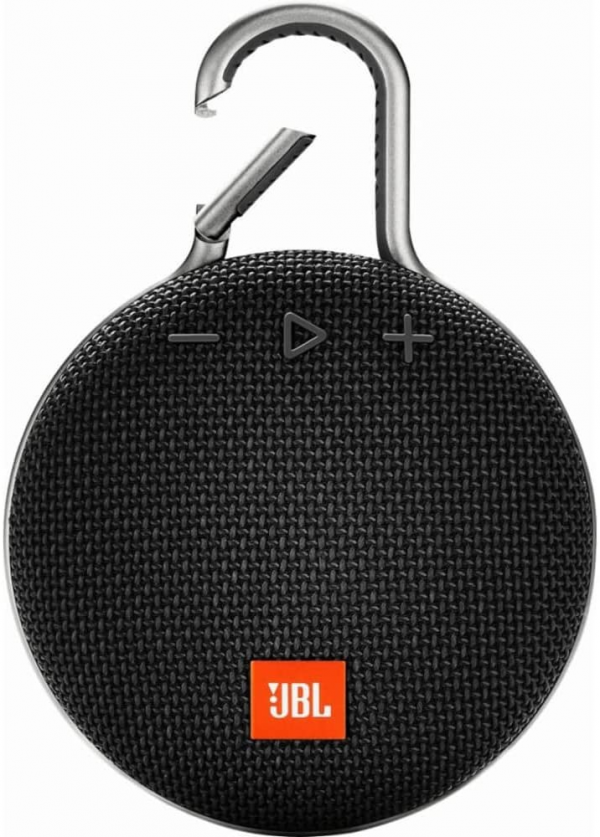JBL
JBL Clip 3 ultra-portable speaker: a concept that is as convincing as ever
Aprox. 41€
See specificationsThe new Clip 3 ultra-portable speaker arrives for the summer of 2018 with an introductory price of € 59.99. Always equipped with its carabiner system, this flagship model from JBL returns with a new design, an improved hands-free micro kit and better autonomy. Is this enough to dethrone the tenors of its category? Response through this test.
Positive points
Homogeneous and relatively precise sound rendering.
Voice intelligibility.
Ease of use.
Solid autonomy (around 15h).
Very robust and neat design (waterproof).
Improved carabiner system.
Communication latency decreasing, low enough to follow a video.
Bad points
Clearly audible pumping and distortion effects beyond 60% of the volume.
Hands-free kit usable, but much less effective than on the previous version.
No more integrated mini-jack cable.
Our review
Ergonomics
For this third iteration, the JBL Clip takes advantage of a facelift. This model maintains more or less the same proportions, to within a few millimeters. The integration of the famous carabiner gives rise to more harmonious lines and a more modern design. The materials used remain the same (rubbery soft touch plastic and very rigid braided fabric grid) and we always salute the good quality of manufacturing and finishes.
The set is solid and shows a good resistance to shocks, water splashes and immersion in water (IPX7 certification). What is more, the fusion of the carabiner in the chassis eliminates the possible problems of breakage of the plastic element fixing the carabiner on Clip 2. A transparent and non-slip surface appears at the rear of the enclosure. The inner surface of the carabiner is covered with a rubber coating, certainly there to avoid early signs of wear and provide better grip. Anyway, the clip never failed us during our test period.
The possibilities of control and the experience of use have not changed an iota. We always appreciate the simplicity of the start-up and pairing in Bluetooth 4.1, even in the absence of a multipoint connection (the only model in this category to offer it at the moment is the Bose SoundLink Micro) and back to previous song. The buttons are rather responsive, the volume control is linked as well with iOS or Android and the multiple light and sound indications allow you to find your bearings. In short, there is very little to complain about the ease of use.
The position of the buttons has however changed: the buttons for managing playback, calls, listening volume and switching to the next song are now positioned on the front panel, directly on the fabric grid. They are therefore more easily accessible. The light indication is passed under the carabiner rather than behind and is larger, therefore more visible. The cover hiding the micro USB port for recharging the speaker is still there, but we can now find a 3.5 mm mini-jack input instead of the small mini-jack cable that comes out of Clip 2: good news for replacement in case of breakage , bad for practicality.
The new 1000 mAh battery (compared to 730 mAh on Clip 2) should in principle extend the duration of use. If we have happily exceeded the 10 hours of autonomy announced, reaching 15 hours of use after a full charge and the volume placed at around 75%, this endurance is not greater than that of the previous version. Charging is a bit long (almost 3 hours once the battery is flat), but nothing really prohibitive in the face of the very good autonomy offered.
If JBL is to be believed, the hands-free micro kit would have been improved. In fact, we unfortunately see the opposite with a less clear voice, certain muffled, eaten syllables (especially when the sound “s” is present) and the need to be closer to the speaker to be understood (less 1 m indoors and less than 50 cm outdoors). The microphone is still usable, but its capture performance is much less surprising than that of Clip 2: too bad!

Audio
In terms of listening experience, it is not day and night between the second and the third version of the Clip. The performance is always very good for a speaker of this size. Nevertheless, we feel a clearer focus on the mediums on the latter.
As we noticed on Clip 2, don't expect to be overwhelmed by the bass, far from deep. However, they are present enough to provide a minimum of seating. A bit of presence around 200 Hz would still not have been too much, because the voices lacked trunk. To maintain a certain cleanliness and precision in this region, we advise you not to push the volume excessively (beyond approximately 60-65% of the volume).
Clip 3 favors the midrange, between 1 and 2 kHz while softening the region of the high midrange. This has the effect of reinforcing the presence of voices and the attack from certain sources and at the same time the nasal side of the voices (a bit like through a telephone). Rest assured, the phenomenon remains subtle so as not to significantly alter the timbre. We appreciate the precision of the rendering in the midrange and treble as well as the good definition in these frequency regions. This helps to correctly identify the different sources, even with a speaker of this size and a monophonic reproduction. Another small point of satisfaction, the treble is less accentuated than before. The shiny side (even scintillating at high volume) is much less present, even if we are still far from a very soft behavior (depending on the situations and the songs, the sibilants may appear).
Because of the awakening of the distortion that we mentioned above, it is not possible to use the Clip 3 at full power without compromising the quality of the sound rendering. If we limit ourselves to 60-65% of the maximum volume, we still obtain a comfortable level for proximity listening. Clearly do not expect to sound an evening.
Clip 3 has significantly reduced the communication latency in Bluetooth. From now on, it is possible to follow a video without undergoing a too handicapping gap between sound and image, especially during dialogues.

Conclusion
Clip 3 refines its recipe without upsetting it. This model offers a slightly more robust design and a much more reasonable wireless communication latency than that of its predecessor, but sacrifices the quality of the hands-free microphone kit. In short, if you like the concept, but want to spend as little as possible, you can look at the side of the previous model, often offered cheaper and always as interesting.

Specifications

